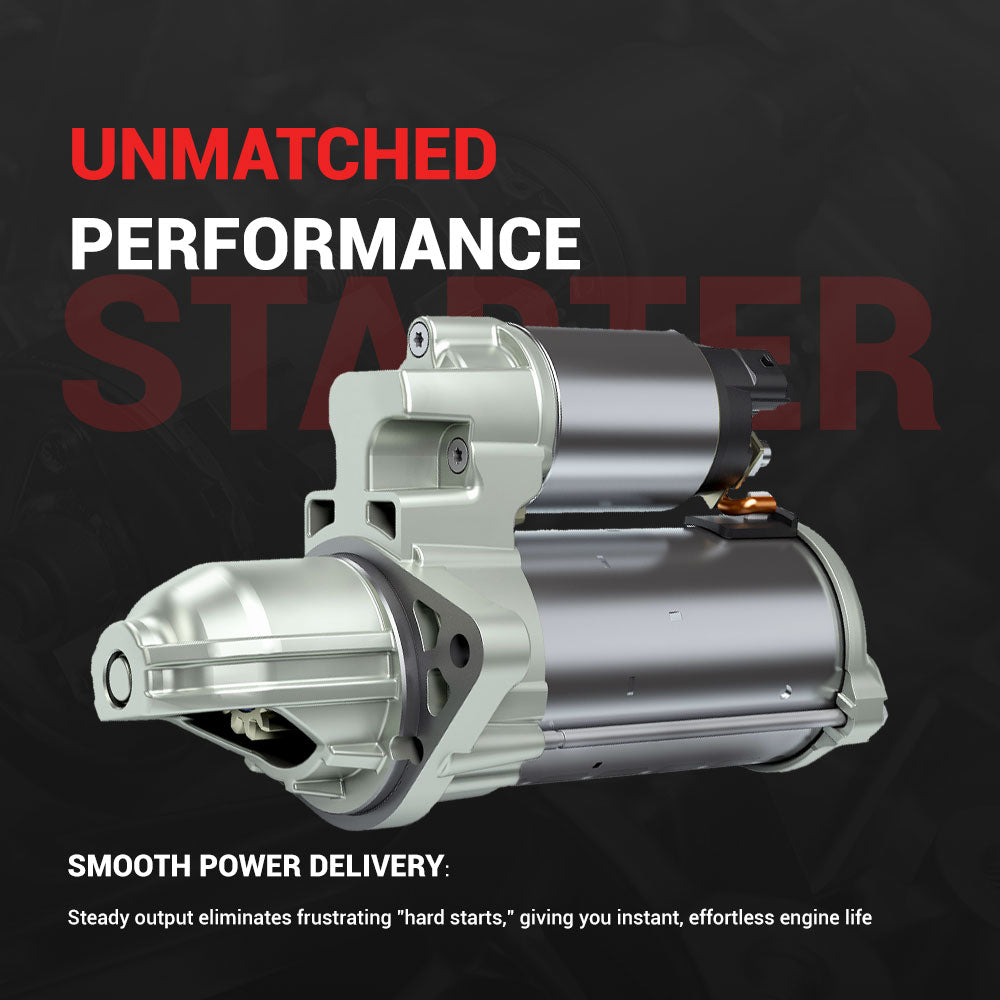Car won't start? Starter Motor might be slacking off.

We’ve all been there — you hop into the car, turn the key (or press Start), and… nothing. No crank, no engine grumble, maybe just a single click. First reaction: “Battery!” But hold up — sometimes the battery is fine and the real troublemaker is the starter motor. This guide walks you through the common signs, a few safe DIY checks, typical replacement costs, and where to get a reliable starter without the headache.
Most common starter motor symptoms (what people Google)
Here are the phrases people type into Google and what they usually mean:
- "car won't start but battery is good" — instrument cluster lights up but engine won’t crank. That points away from the battery and toward starter or wiring.
- Clicking sound when starting — a single or repeated click often indicates the starter solenoid engages but the motor doesn’t turn.
- Intermittent starting — sometimes it starts, sometimes it doesn't. Could be worn brushes, bad bendix gear, or flaky connections.
- Slow cranking — engine turns slowly even with a healthy battery; starter may be weak or overloaded.
Quick, safe checks you can do (How to test starter motor)
These are basic checks to narrow things down. Don’t attempt heavy electrical work if you’re unsure — safety first.
- Check battery voltage. Use a multimeter: ~12.6V at rest is healthy. If it’s under 12V, charge or jump-start and test again.
- Inspect & tighten connections. Corroded or loose battery terminals and starter leads are a surprisingly common cause. Clean and tighten them.
- Listen closely. A distinct click → starter solenoid is getting signal but motor isn’t turning. No click at all → could be ignition switch, fuse/relay, or bad solenoid wiring.
- Emergency tap. As a temporary trick, a light tap on the starter casing can free a stuck gear. This is a short-term remedy only — plan a replacement.
- When to stop. If you smell burning, see smoke, or the starter gets extremely hot — stop. Tow the car or call a pro.
Starter motor replacement cost (ballpark)
Costs vary by vehicle and region. In North America you can expect:
- Parts: $100–$300 (aftermarket vs remanufactured vs OEM)
- Labor: $150–$300 depending on access and shop rates
- Total: ~ $250–$600 typical
If you’re handy and the starter is easy to reach, doing it yourself will save labor, but make sure you buy a quality unit — cheap starters can fail fast and end up costing more.
Which starter should I buy?
Look for these things:
- Exact fit for your make / model / engine code
- Reputable brand or remanufactured unit with warranty
- Clear specs (voltage, power, pinion teeth) — match your original
Shop quality starter motors at Techie Auto Parts
When to call a mechanic
If you’re not comfortable working under the hood, if the starter is hard to reach (engine/gearbox layout), or if diagnostics get more complex (starter draw test, relay testing), get professional help. A shop can quickly run a starter draw test and verify the starter versus alternator/battery/ECU issues.
Quick summary / TL;DR
Symptoms: clicking, intermittent start, engine won’t crank but dash lights work.
DIY checks: battery voltage, tighten/clean terminals, listen for click, light tap in an emergency.
Cost: roughly $250–$600 installed in North America.
Need a starter now? We stock remanufactured and new starter motors with fitment lookup — fast shipping worldwide.
Frequently asked (short answers)
- Can a bad starter drain my battery?
- Usually no — the starter draws power only while cranking. But a shorted starter can cause issues. If the battery drains while parked, look at parasitic draw causes.
- Is a clicking noise always the starter?
- No — sometimes a weak battery or poor connection causes the click. Rule out the battery and connections first.
- Can I replace the starter myself?
- Yes if you have tools and the unit is accessible. If it’s under the intake or requires lifting the vehicle, consider a shop.
